Beneath the countryside landscape of Marliens, mere kilometers from Dijon in the heart of the Ouche valley, lies evidence of ancient life spanning through millennia. Before the expansion of a local gravel pit could proceed, INRAP archaeologists were called in to investigate the area, and came across a saga of human endeavor that stretches from the Neolithic period to the dawn of the First Iron Age. Their findings? An astonishing array of settlements, burials, and enigmatic structures scattered across 6 hectares (15 acres) that challenge our understanding of prehistoric Europe.
Horseshoe Enclosures – A Prehistoric Monument?
The oldest occupation is characterized by a monument made up of three interlocking enclosures. In the center of the monument was a circular enclosure 11 m (36 ft) in diameter. To the north, an 8 m (26 ft) long “horseshoe” shaped enclosure is coupled with the circular enclosure and to the south, it is an open enclosure which leans against the central enclosure.
The presence of a layer of gravel, observed in the filling of the two side enclosures, testifies to the existence of a palisade (stake fence). The different stratigraphic sections made indicate that the three enclosures are contemporary.
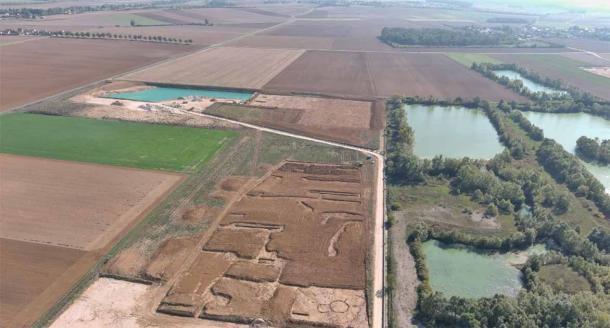
General view of the Marliens gravel pit, with prehistoric enclosures visible center bottom. (© Jérôme Berthet, Inrap)
This type of monument seems unprecedented and currently no comparison has been possible. The dating still remains uncertain, however the only artifacts discovered in the ditches correspond to cut flints which would suggest a chrono-cultural attribution to the Neolithic period. For greater precision, radiocarbon analyzes are underway to clarify the chronology of this monument.
The Bell Beaker period is attested by several objects discovered just under the topsoil in a very level structure. This item bundle consists of seven flint arrowheads, two archer’s bracers, a flint lighter, and a copper alloy dagger.
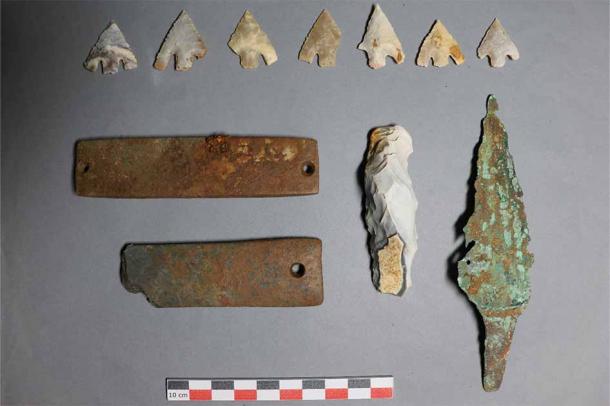
Objects constituting the “panoply” of a Bell Beaker archer. (© Pauline Rostollan, Inrap)
Traces of “iron oxide” were observed on one of the armbands corresponding to pyrite, an essential element for lighting a fire. This series of objects most often accompanies a burial, however, due to its stratigraphic position located at the base of the plows, this hypothesis could not be confirmed.
Analysis of the composition of the copper alloy of the dagger should make it possible to establish its origin and provide us with information on commercial exchanges at that time.
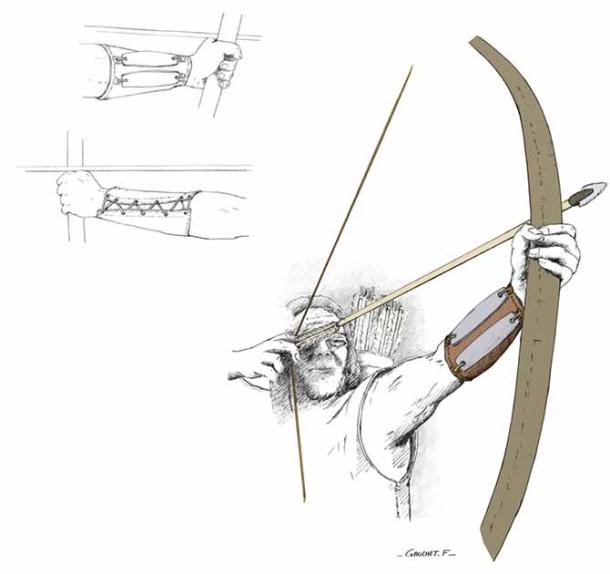
Graphic Reconstruction of the archer’s finery. (© François Gauchet, Inrap)
Bronze Age Settlement
The occupation during the early Bronze Age is characterized by the presence of several wells which are the only remaining evidence of habitation from this period. Palynological (pollen) and carpological (seed) analyzes of the clay layers at the bottom of these structures provide much information on the natural environment and landscape of the valley in the first half of the second millennium BC.
Between 1500 BC and 1300 BC, a necropolis of five circular enclosures composed of four open enclosures and one closed is located in the plain over an area of 6000 m². The acidity of the soil did not allow the preservation of unburned bones so that no complete burial has been uncovered, however remains of burials and a funeral pyre have been identified in the ditches of the largest open enclosure with a diameter of 24 m (79 ft).
The dating of this enclosure is based on five copper alloy pins and a necklace of around forty amber beads discovered deposited in its ditch. The rare ceramic shards collected in the other enclosures confirm the dating of this necropolis and the contemporaneity of the different enclosures.
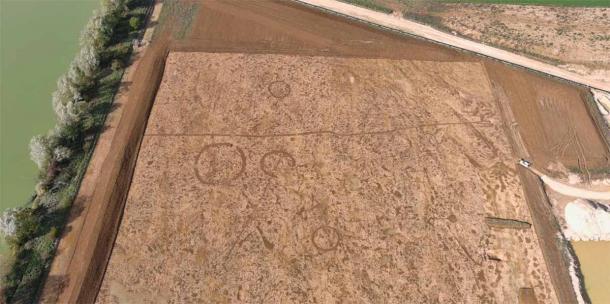
General view of the necropolis after stripping of Marlians. (© Jérôme Berthet, Inrap)
And Then, the Iron Age Folk
Finally, the last occupation corresponds to a second necropolis nearly 400 m (1310 ft) away from the one previously described. It is characterized by the discovery of six cremations dating from the First Iron Age. The urns, covered by a lid, contained a single bone deposit sometimes accompanied by ornaments (bracelets and/or rings in copper alloy and iron).
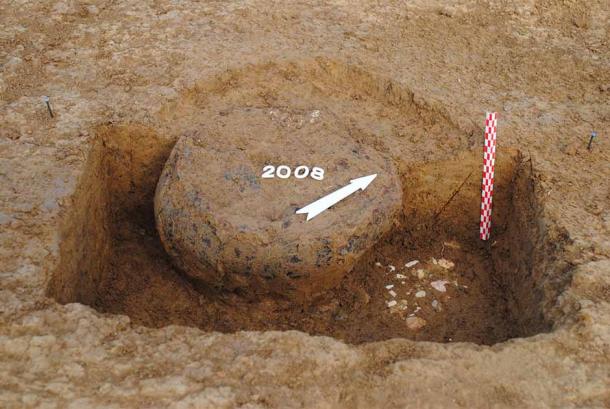
Crematin urn discovered in the necropolis before its removal to be excavated in the laboratory. (© Luc Staniaszek, Inrap)
These small necropolises with an area of less than 100 m² (1080 sq ft) are difficult to identify during diagnostics and this is the first time that one of these complexes has been excavated in eastern Burgundy. Studies of cremated bones are underway to determine funerary practices and gestures linked to these deposits.
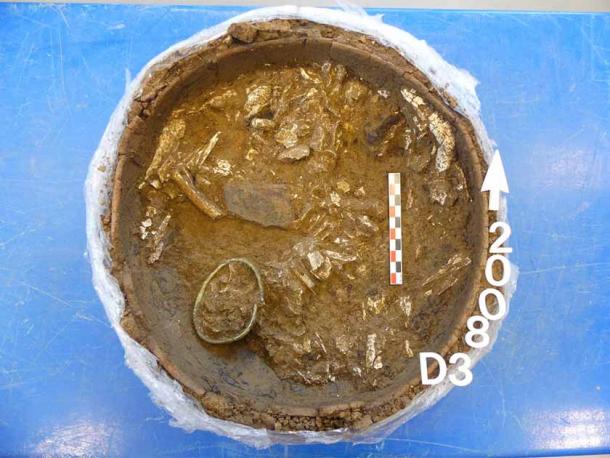
Bracelet discovered during the excavation of a cremation. (© Luc Staniaszek, Inrap)
Top image: Aerial view of the triple enclosure. Source: © Jérôme Berthet/ Inrap
This article is a press release by INRAP, originally titled, ‘A Protohistoric Funerary Sector In Marliens (Cote d’Or)’, with an introduction added by an Ancient Origins editor.





